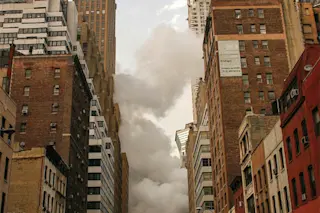We live in a civilization powered by steam. Most of us don’t notice its role in keeping the lights on, but steam power is practically ubiquitous. No matter what fuel a power plant uses — coal, natural gas, oil, uranium — it serves a single purpose: boil water to make high-pressure steam that spins turbine blades, which generate electricity. Even the most advanced power plant ever conceived — a massive experimental nuclear fusion project now under construction in France — is essentially just an exceedingly complex boiler.
Nowhere else is our modern dependence on (and possible uses of) the hot stuff better exemplified than New York, a city literally built on steam.
In New York and other large cities around the world, steam does more than just generate electricity in power plants: It’s also piped directly into buildings for heating, cooling and other uses. Manhattan’s steam service started in 1881, ...














